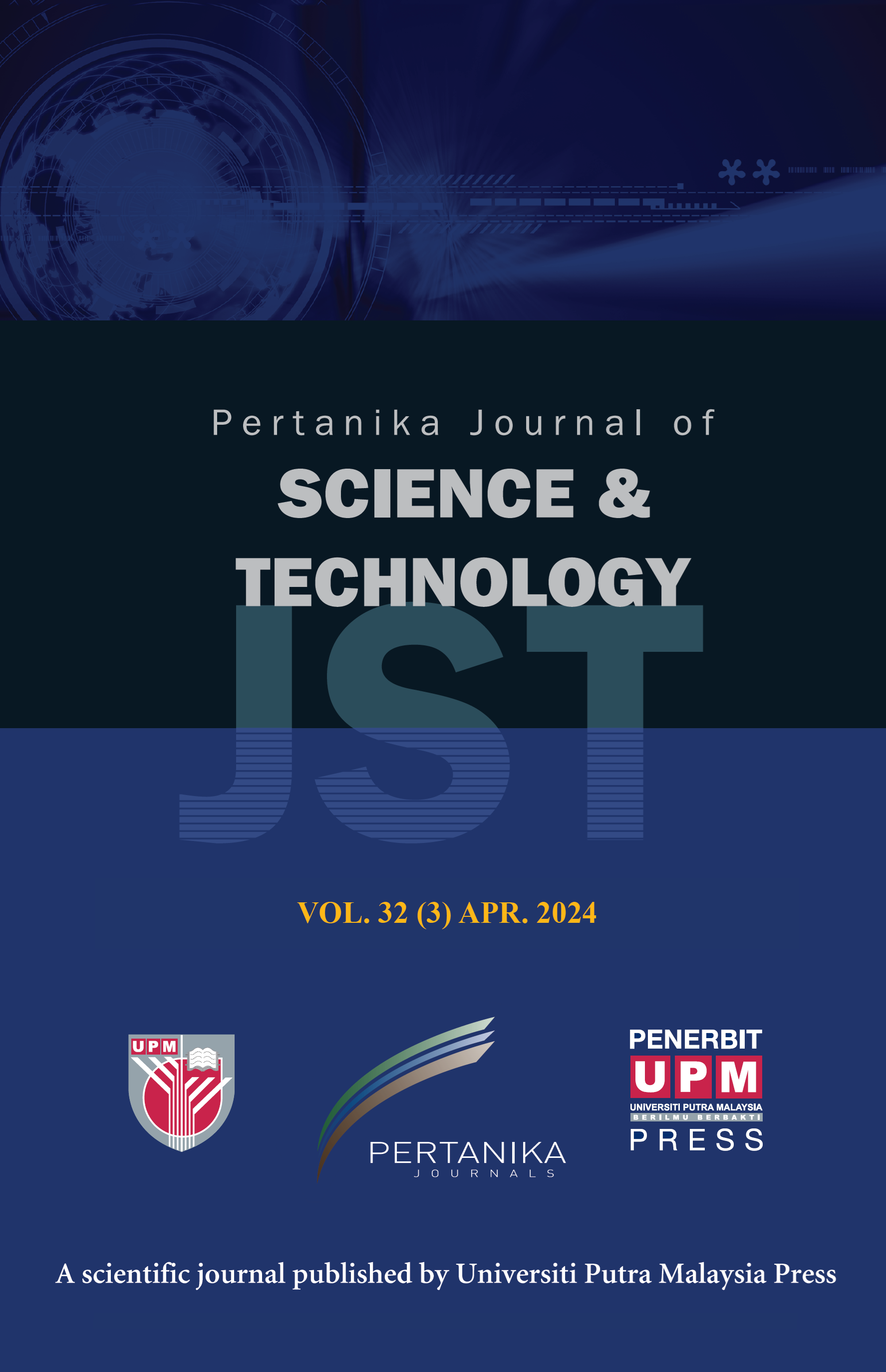PERTANIKA JOURNAL OF SCIENCE AND TECHNOLOGY
e-ISSN 2231-8526
ISSN 0128-7680
Mesh Optimisation for General 3D Printed Objects with Cusp-Height Triangulation Approach
Qais Ahmed Habash, Noor Ali Sadek, Ahmed Faeq Hussein and Abbas AlZubaidi
Pertanika Journal of Science & Technology, Pre-Press
DOI: https://doi.org/10.47836/pjst.32.5.04
Keywords: 3D printing, 3D policing, cartesian 3DP, cusp-high compensation, fused deposition modelling (FDM), geometric roughness, mesh optimization, stereo-lithography
Published: 2024-08-08
3D printing (3DP) is increasingly utilized to achieve quick turnaround on various geometric designs and prototypes, being the growing part of additive manufacturing technology (AMT). The 3DP technique effectively improves the production of complex models in terms of low-cost, time-consuming production, and with less material volume. The key to results optimisation with 3DP is the preparation of the geometry. The following techniques can effectively reduce the required time of the 3D printing process for complex and non-linear CAD files. The fused deposition modelling/fabrication (FDM/FFF) techniques become the first choice in many applications, including biomedical ones. Still, some obstacles exist in the geometry roughness and quality zones. This paper proposes an optimisation method for 3D printed shapes used in biomedical devices and instrumentation by minimising the support structure attached to the model using the FDM technique. In this research, we proposed a method for dynamic compensation against gravity-affected parts extended from the main object’s geometry using a forward planar learning (FPL) algorithm to minimise cusp height in 3D printed objects. After the slicing stage, the outcomes proved to be of good quality, optimised the object’s surfaces, and minimised the printing time by 32%–38%. The proposed method is promising in defining a better setting for slicing and toolpath for FDM 3D printing. However, this method was not tested on other 3DP methods (Stereolithography (SLA), Selective laser sintering (SLS), and Digital Light Processing (DLP)), as more verification efforts need to be done on these 3D printing processes.
-
Aimar, A., Palermo, A., & Innocenti, B. (2019). The role of 3D printing in medical applications: A state of the art. Journal of Healthcare Engineering, 2019, Article 5340616. https://doi.org/10.1155/2019/5340616
-
Bächer, M., Whiting, E., Bickel, B., & Sorkine-Hornung, O. (2014). Spin-it: Optimizing moment of inertia for spinnable objects. ACM Transactions on Graphics (TOG), 33(4), Article 96. https://doi.org/10.1145/2601097.2601157
-
Blumenthal, T., Fratello, V., Nino, G., & Ritala, K. (2013). Conformal printing of sensors on 3D and flexible surfaces using aerosol jet deposition. Nanosensors, Biosensors, and Info-Tech Sensors and Systems, 8691, 118-126. https://doi.org/10.1117/12.2009278
-
Goh, G. L., Dikshit, V., Koneru, R., Peh, Z. K., Lu, W., Goh, G. D., & Yeong, W. Y. (2022). Fabrication of design-optimized multifunctional safety cage with conformal circuits for drone using hybrid 3D printing technology. The International Journal of Advanced Manufacturing Technology, 120(3), 2573-2586. https://doi.org/10.1007/s00170-022-08831-y
-
Hedges, M., & Marin, A. B. (2012, March 14-15). 3D aerosol jet® printing-adding electronics functionality to RP/RM. [Paper presentation]. Fraunhofer Direct Digital Manufacturing Conference (DDMC), Berlin, Germany.
-
Jalil, N. A. A., Sharaf, H. K., & Salman, S. (2017). A simulation on the effect of ultrasonic vibration on ultrasonic assisted soldering of Cu/SAC305/Cu joint. Journal of Advanced Research in Applied Mechanics, 36(1), 1-9.
-
Musialski, P., Auzinger, T., Birsak, M., Wimmer, M., & Kobbelt, L. (2015). Reduced-order shape optimization using offset surfaces. ACM Transaction Graphics, 34(4), Article 102. https://doi.org/10.1145/2766955
-
Sharaf, H. K., Ishak, M. R., Sapuan, S. M., & Yidris, N. (2020a). Conceptual design of the cross-arm for the application in the transmission towers by using TRIZ–morphological chart–ANP methods. Journal of Materials Research and Technology, 9(4), 9182-9188. https://doi.org/10.1016/j.jmrt.2020.05.129
-
Sharaf, H. K., Salman, S., Abdulateef, M. H., Magizov, R. R., Troitskii, V. I., Mahmoud, Z. H., Mukhutdinov, R. H., & Mohanty, H. (2021). Role of initial stored energy on hydrogen microalloying of ZrCoAl (Nb) bulk metallic glasses. Applied Physics A, 127(1), Article 28. https://doi.org/10.1007/s00339-020-04191-0
-
Umetani, N., & Schmidt, R. (2013). Cross-sectional structural analysis for 3D printing optimization. SIGGRAPH Asia Technical Briefs, 2013, Article 5. https://doi.org/10.1145/2542355.2542361
-
Wang, W., Wang, T. Y., Yang, Z., Liu, L., Tong, X., Tong, W., Deng, J., Chen, F., & Liu, X. (2013). Cost-effective printing of 3D objects with skin-frame structures. ACM Transactions on Graphics (TOG), 32(6), Article 177. https://doi.org/10.1145/2508363.2508382
-
Yamanaka, D., Suzuki, H., & Ohtake, Y. (2014, December 3-6). Density aware shape modeling to control mass properties of 3D printed objects. [Paper presentation]. Computer Graphics and Interactive Techniques (SIGGRAPH-ASIA), Shenzen, China.
-
Zhu, B., Skouras, M., Chen, D., & Matusik, W. (2017). Two-scale topology optimization with microstructures. ACM Transactions on Graphics (TOG), 36(4), Article 120b. https://doi.org/10.1145/3072959.3095815
-
Zhou, Y., Kalogerakis, E., Wang, R., & Grosse, I. R. (2016, October). Direct shape optimization for strengthening 3D printable objects. Computer Graphics Forum, 35(7), 333-342. https://doi.org/10.1111/cgf.13030
ISSN 0128-7702
e-ISSN 2231-8534
Share this article

